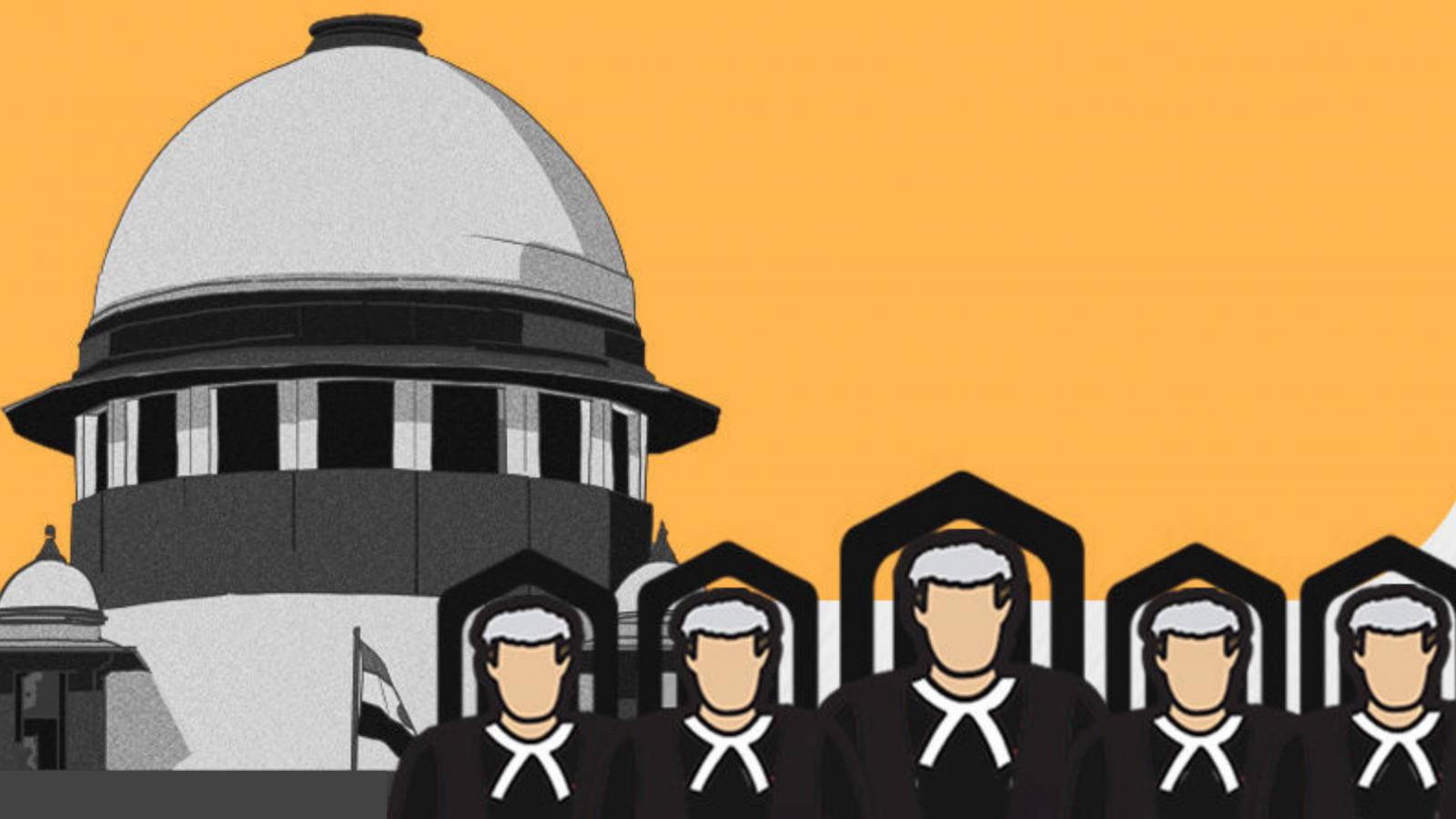
The Supreme Court’s Collegium Resolutions: An Empty Formality?
Making the collegium resolutions public does not make any significant contribution in the direction of transparency or accountability
This is a guest blog.
The plea to make the Supreme Court’s Collegium proceedings for judicial appointments transparent is as old as the Supreme Court Collegium itself which came into force in 1993. In 2014, the Union Government, with the intent of inducing transparency and accountability in the appointments process, ushered in the National Judicial Appointments Commission Act. However, the 5-judge constitution bench of the Supreme Court in the case of Supreme Court Advocates-on-Record Association v. Union of India struck down the Act on grounds that it impinged upon judicial independence. By the end of this episode, cries for transparency and accountability also faded away.
But, in 2016, a seminal development took place in the history of the Supreme Court Collegium. Justice Jasti Chelameswar, after penning a minority opinion in the Supreme Court Advocates-on-Record Association v. Union of India, wrote a letter to the then Chief Justice of India, Justice TS Thakur, indicating his unwillingness to participate in the collegium proceedings due to their opaqueness. According to Justice Chelameswar “Transparency is an aspect of rationality. The need for transparency is more in the case of the appointment process. Proceedings of the Collegium were absolutely opaque and inaccessible both to the public and history, barring occasional leaks.”
Thereafter, on October 2017, the Collegium comprising of Chief Justice of India (CJI) Dipak Misra, Justice J. Chelameswar, Justice Ranjan Gogoi, Justice Madan B. Lokur, Justice Kurian Joseph, passed a resolution which stated that the decisions of the collegium after October 3, 2017, would be published on the website of the Supreme Court of India. Further, the collegium would also mention the reasons for the elevation of judges to the High Courts and the Supreme Court.
According to the collegium, this move would both ensure transparency in appointments and maintain the confidentiality of the Collegium proceedings. Around four years have passed since then, but there is a lack of any significant critical engagement in the literature to examine the aftermath of this decision in the interest of transparency in the appointments process. This blog seeks to fill this gap by surveying and analysing the Supreme Court’s Collegium Resolutions dealing with the appointment of judges to the Supreme Court of India between January 10, 2018 and August 28, 2019 as a test sample.
Survey of Collegium Resolutions
The criteria based on which the collegium resolutions dated: 10 January 2018,July 16, 2018,October 30, 2018, January 10, 2019, April 12, 2019, May 08, 2019,andAugust 28, 2019 were passed can be deduced as follows:
- Firstly, the candidate needed to be “more deserving and suitable in all respects” than other Chief Justices and senior puisne Judges of the High Court for being appointed as Judges of the Supreme Court of India.
- Secondly, the Collegium took “seniority” among the Chief Justices and Senior Puisne Judges of the High Courts, and “competence, conduct, merit and integrity” into consideration.
- Thirdly, the candidate had to have been “eminently suitable” for being appointed as a judge in the Supreme Court.
- Lastly, the collegium also took into consideration the need to give “due representation” to all sections of the society including those belonging to the SC/ST/OBC categories, women and minorities, and in some instances the need to give due representation to all High Courts on the bench of the Supreme Court was taken into consideration.
Analysis of the Supreme Court Collegium’s Resolutions
The central purpose of the survey mentioned above was to trace the pattern followed in the collegium resolutions to ascertain if it reflects transparency and accountability. What emerges is that:
- The criteria considered for elevating an advocate or a judge depends upon the members who form the part of the collegium. In a few instances, providing due representation to state High Courts was given a priority and, in a few instances, giving due representation to members belonging to historically disadvantaged groups was given consideration.
- The Third Judges Case had held that the number of members in the Collegium was increased in order to accommodate divergent opinions. However, there were no dissenting members in any of the collegium resolutions.
- This lack of dissent is even more disturbing because the same members who once agreed upon the elevation of a particular candidate did not dissent when a new collegium was formed and completely different candidates were elevated. Thus, the once unanimous recommendation of the collegium being overruled by the same collegium members when the composition of the collegium changed, raises questions regarding the independence and autonomy of the collegium members in the decision-making process.
- Throughout the collegium resolutions, it has been mechanically stated that merit, integrity, conduct, competence, and suitability are the factors upon which the decisions rest. However, the collegium resolutions do not provide any reasoning to substantiate which action or aspect of the candidate reflected their merit, competence, integrity, desirability or suitability. Further, the criterion of being “eminently suitable” for elevation is prima facie vague, ambiguous and subjective on all counts.
To sum it up, there is a great deal of subjectivity in the collegium resolutions. The collegium resolutions being made public does not make any significant contribution in the direction of transparency or accountability because the Collegium does not make appointments based on the criteria but rather the criteria for elevation is amended to justify the decisions of the collegium. Further, there is no evidence being provided in the resolutions to substantiate the decisions of the Collegium. Lastly, the independence and autonomy of the collegium members are also open to different interpretations. Against this backdrop, it is only natural to draw a conclusion that the collegium resolutions reflect ‘Rule by Law’ more than ‘Rule of Law’, and the entire exercise is nothing but an empty formality.
Views are personal.
